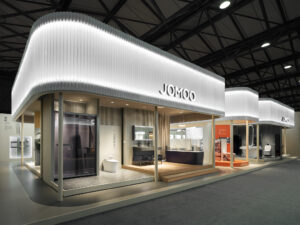The Role of Retail and Showrooms in Enhancing Customer Experience
 Introduction
Introduction
In today’s competitive business landscape, retail and showrooms play a crucial role in connecting brands with consumers. These physical spaces are no longer just points of sale—they have evolved into immersive environments that shape customer perceptions and drive buying decisions. With the right design, layout, and customer service strategies, showrooms can significantly enhance the retail experience and support business growth.
What Are Retail and Showrooms?
Retail refers to the sale of goods and services directly to consumers through physical stores or online platforms. A showroom, on the other hand, is a space where products are displayed for customers to view, touch, and test before purchasing—often found in industries like furniture, electronics, automobiles, fashion, and home décor.
While showrooms may not always stock products for direct sale, they serve as a bridge between online research and final purchasing decisions.
Importance of Retail and Showrooms in Modern Business
1. Enhancing Brand Visibility
A well-designed showroom helps brands create a strong physical presence. Customers associate the look and feel of the showroom with the brand itself, building a lasting impression. Creative displays, lighting, and product arrangements can significantly increase brand appeal.
2. Offering Personalized Customer Experiences
Retail and showrooms allow for human interaction, which is often lacking in online shopping. Trained staff can provide personalized assistance, product demos, and expert advice, making the customer feel valued and understood.
3. Boosting Customer Confidence
Seeing and experiencing a product firsthand helps customers make informed decisions. This is especially important in high-involvement purchases like furniture or automobiles. A tactile experience builds trust in product quality and reduces returns.
4. Driving Omnichannel Success
Many businesses now use showrooms as part of an omnichannel strategy—where online and offline sales channels work together. Customers might explore products in-store and later purchase online, or vice versa. This flexibility meets modern consumer behavior patterns.
Key Features of Successful Retail Showrooms
To stay competitive, retail and showrooms must offer more than just physical products. Key features include:
Interactive Displays: Touchscreens, AR/VR setups, and digital catalogs enhance product discovery.
Minimalist Design: Clear layout and smart lighting keep customer focus on the products.
Live Demos: Functionality demonstrations (e.g., kitchen appliances or electronics) help customers visualize product use.
Comfortable Atmosphere: Seating, refreshments, and ambient music improve dwell time and satisfaction.
Retail and Showrooms vs. E-Commerce
While online shopping continues to rise, retail and showrooms still offer unique advantages:
| Aspect | E-Commerce | Retail & Showrooms |
|---|---|---|
| Product Testing | Not possible | Customers can try before buying |
| Human Interaction | Limited to chat or email | Personalized in-person experience |
| Instant Gratification | Requires delivery time | Immediate purchase and possession |
| Return Rates | Often higher | Lower due to better product knowledge |
How Retail and Showrooms Improve Sales
Investing in showrooms can lead to:
Higher Conversion Rates: Shoppers are more likely to buy after a positive showroom visit.
Upselling Opportunities: Staff can recommend premium products during live interaction.
Increased Customer Loyalty: Positive in-store experiences lead to repeat visits and referrals.
Valuable Customer Feedback: Staff can directly observe and ask customers about preferences.
Industries That Benefit the Most
While all retail businesses benefit from showrooms, certain sectors gain even more:
Automotive: Customers need to test-drive vehicles.
Furniture: Size, color, and material are best judged in person.
Luxury Fashion & Jewelry: Experience and brand exclusivity matter.
Consumer Electronics: Features are better explained and demonstrated on-site.
Future of Retail and Showrooms
As technology advances, retail showrooms are becoming more digital and data-driven. Innovations include:
Smart Mirrors: Allow customers to try on clothes virtually.
Beacon Technology: Sends product info to smartphones.
AI Assistants: Provide automated help in-store.
Sustainable Design: Eco-friendly materials and energy-efficient lighting improve appeal.
SEO Tips for Businesses Promoting Retail and Showrooms
To rank well online, businesses should optimize for local and relevant keywords. For example:
Use long-tail keywords like “best furniture showroom in [City]” or “luxury retail experience in [City].”
Add schema markup for locations and customer reviews.
Ensure Google My Business is updated.
Post regularly on social media about showroom events, launches, or product arrivals.
Conclusion
Retail and showrooms are not just about displaying products—they’re about crafting experiences that resonate with customers. In a world where consumers are bombarded with choices, providing a memorable and interactive shopping journey sets a brand apart. Whether you’re a small boutique or a multinational chain, investing in your showroom can lead to higher engagement, stronger brand loyalty, and increased sales.